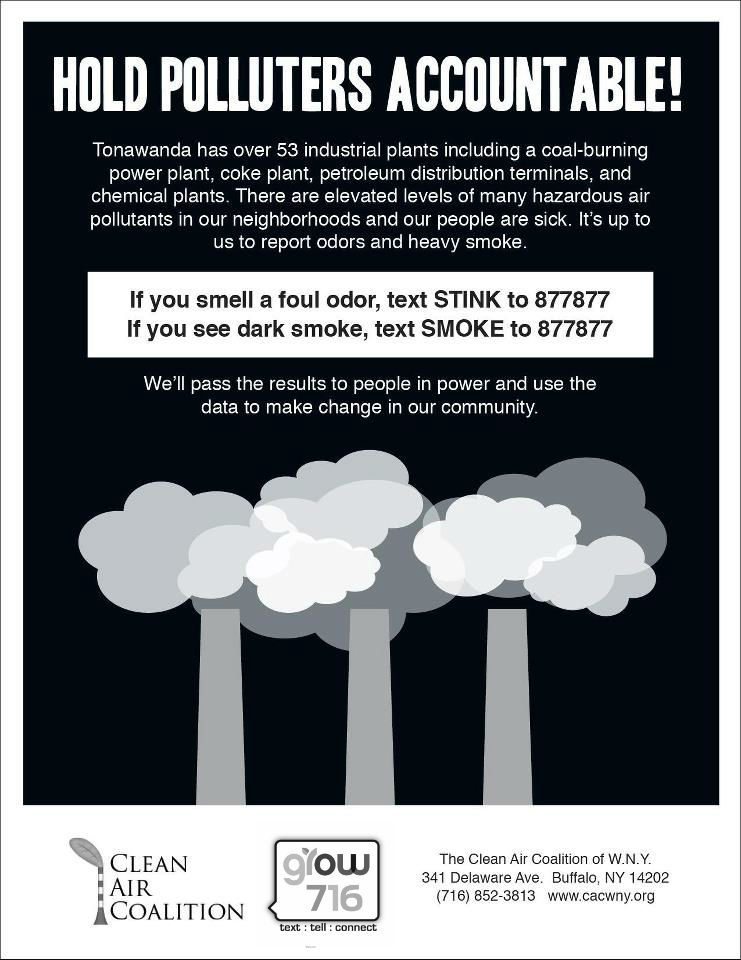
Community Foundations test mobile to inform residents
Through July 1, we are accepting applications for the Knight Community Information Challenge, which provides matching funding to community and place-based foundations supporting news and information projects. Here, Michele McLellan writes about several mobile projects funded through the challenge.
The Community Foundation for Greater Buffalo is one of a growing number of Knight Community Information Challenge winners looking at mobile platforms to inform and engage local residents.
The foundation created Grow 716: Text: Tell: Connect to “give voice to everyone in our region that is concerned about environmental issues in their neighborhood. We recognize that all residents have information and experiences to share,” Kristen Kaszubowski, the foundation’s environmental communications coordinator, said in an email.
Kaszubowski said a partner organization, the Clean Air Coalition of Western New York, is testing the texting project with two campaigns: a truck idling campaign and an air quality campaign.
She said community members can text TRUCK to report idling trucks. The coalition collects data about where common offenders idle and that will help focus enforcement efforts. It is illegal for trucks to idle longer than five minutes. They can text SMOKE to report excessive smoke from smokestacks, she said. If there is a foul odor in their neighborhood, community members can text STINK to report it. The coalition can relay these complaints to the proper authorities.
So far, the Clean Air Coalition has recruited 10 participants to test the truck idling campaign. By last week, there were 17 reports. Six testers are participating in the air campaign and they have submitted 11 reports of odors and four reports of smoke, Kaszubowski said.
The environment is a core issue for the Community Foundation for Greater Buffalo. A three-time Community Information Challenge winner, the foundation also supports a website, http://growwny.org/, that is a hub for dozens of environmental organizations Western New York and it is funding journalistic coverage of the environment at the nonprofit news site Investigative Post.
Kaszubowski said future texting campaigns might include invasive species reporting, fish consumption advisories, sewage overflow alerts, biodiversity reporting, and a community building preservation survey.
She said in the initial pilots, the Clean Air Coalition learned that its audience is generally older and some don’t know how to text. As a result, she said the foundation has opened up the project to different groups in order to test other audiences.
For example, Buffalo’s Young Preservationists groups wants to explore having community members report run-down buildings in their neighborhood so they can create a catalog of buildings that need to be surveyed and addressed.
As consumers increasingly use their phones to access news and information, foundations are taking their engagement efforts to mobile. In a recent survey for Knight Foundation, FSG consulting found that more than one in five Information Challenge grantees were using or considering using mobile platforms to further their work.
Other examples include the Silicon Valley Community Foundation, which used mobile technology and outreach to make it easy for young Hispanics to register to vote in the 2012 election. NowcastSA, a project of the San Antonio Community Foundation, has trained residents to contribute content via their phones. The Gulf Coast Community Foundation in Mississippi is considering building a mobile app to help people locate alternatives to payday lending.
Related: “New focus, opportunity for funding community news and information” on Knight Blog by Susan Patterson and Bahia Ramos, and “Opportunity for funding Open Gov, information tools in Knight Community Information Challenge” on Knight Blog by Chris Sopher
Recent Content
-
Community Impactarticle ·
-
Community Impactarticle ·
-
Community Impactarticle ·


